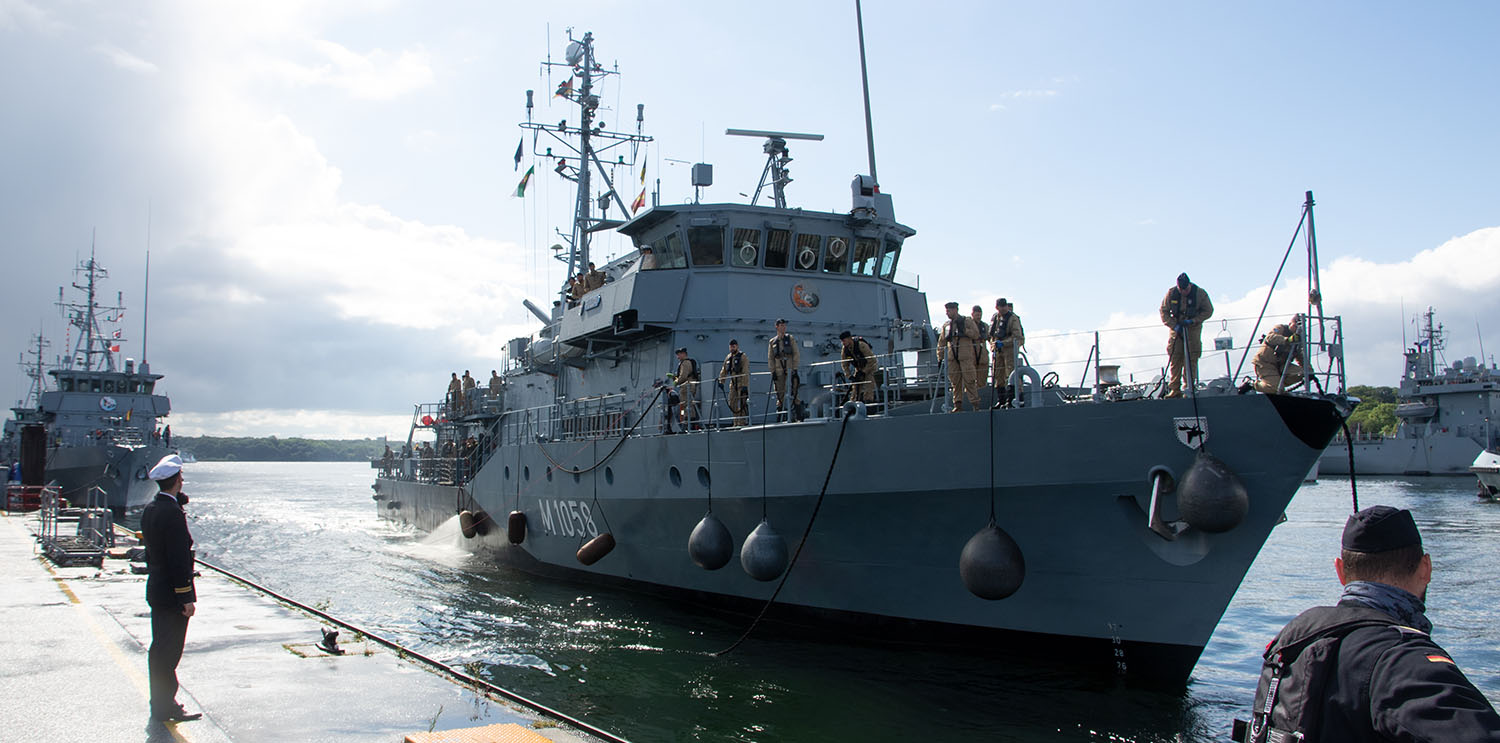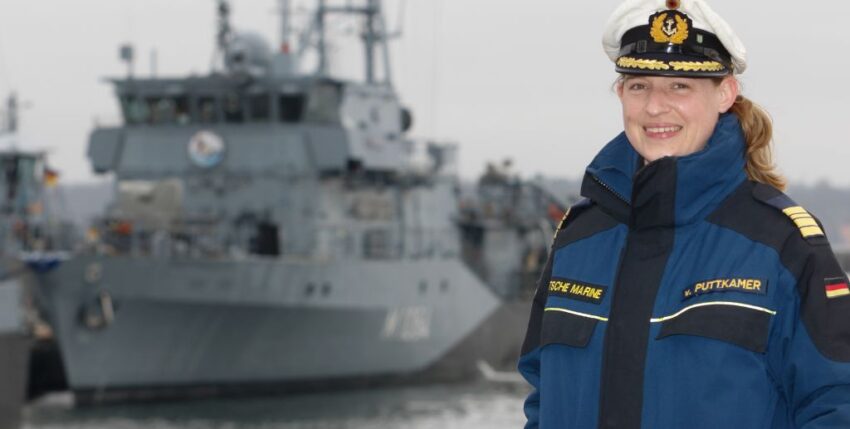Kiel squadron leads NATO exercise in the Baltic Sea
Search for old ammunition also planned
Today at 09:30, the mine defence boats "Fulda", "Bad Rappenau" and "Grömitz" left their home port of Kiel, accompanied by the tender "Elbe" as flag and lead ship. NATO partners Belgium, Denmark, Latvia and Lithuania are joining the association for the two-week manoeuvre "Baltic Mine Countermeasures Squadron Exercise". The international exercise, which was launched four years ago by the German Navy, is intended to improve cooperation between naval forces in the Baltic Sea region. This format is the result of the "Baltic Commanders Conference", a meeting of naval commanders from Denmark, Estonia, Finland, Latvia, Lithuania, Norway, Poland, Sweden and Germany. The initiative came from the Inspector of the German Navy in order to network the commanders at squadron level. The result is pragmatic cooperation in the Baltic Sea region without having to go through authorities, commands or ministries.

The unit will carry out maritime manoeuvres and firing exercises in the western Baltic Sea. The units will deploy their mine defence capabilities in Danish waters in order to search for legacy weapons from wars and conflicts - such as live ammunition, torpedoes, mines and bombs. The unit commander and deputy commander of the 3rd Minesweeper Squadron, Frigate Captain Inka von Puttkamer (38), said: "We have a responsibility to make the Baltic Sea safer. I am all the more pleased that we are also doing this in 2021 under pandemic conditions by setting up a unit together with our partners. International deployments and exercises are our 'daily bread' - and of enormous importance." Due to the coronavirus pandemic, all crews are tested for COVID-19 before setting sail. During the exercise, masks and social distancing are mandatory at all times and the crews must keep to themselves. The rules on board are strict, particularly with regard to staying in the operating areas and serving food. The men and women have to do without joint events and crew swaps, although this has always strengthened the friendship between NATO partners.
The 3rd Minesweeping Squadron in Kiel consists of ten mine defence boats that are capable of mine hunting, mine diving, large-scale mine clearance and mine laying. The technical capabilities are diverse: underwater drones, surface drones of the "Seehund" type and specialised mine divers are available to eliminate underwater dangers. Mine defence capabilities are indispensable for clear and safe sea routes. The Navy's press office has not revealed where exactly the units will be searching for contaminated sites such as munitions from the Second World War. Although the German Navy has had exceptional capabilities in this area for decades, it has not yet been commissioned to do so. When the navy took part in a hazard clearance operation in German waters in 2019, a discussion and outrage erupted over harbour porpoises being killed. This was previously welcome in Danish waters, but the Danes have now also changed their tune and banned blasting. As a result, the association will also not be carrying out any blasting, as a navy spokesperson announced on 17 March.
In a previous version, it was stated that Denmark authorises blasting - this is no longer the case.
Read more marine forum Issue 4 - 21, in which we address the topic.
Text: H. Schlüter
Photos: German Navy/Weishaupt











2 responses
It is to be welcomed that the German Navy's mine defence capabilities, which have existed since the formation of the Bundeswehr, are being further developed in an international context and alliance solidarity is being demonstrated. Good luck to the unit commander!
The danger from contaminated sites does not end in the pandemic, nor does the deployment of the navy. Thank you for that!